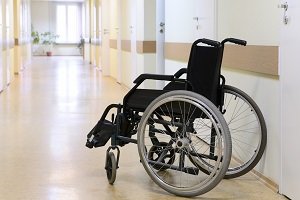
Insurance Spotlight: Senior Care & Assisted Living Facilities
Beacon Hill writes a number of nursing homes and assisted living facility accounts. We work with the top environmental carriers in the marketplace, addressing the exposures specific to this type of facility. Submit a senior care/assisted living account HERE.
When someone takes their elderly relative to a senior care facility, it is usually because they feel that their loved one will get better care at a facility than they can provide at home. Unfortunately, environmental issues at a facility of this type can be extremely hazardous to a compromised population, turning what was hoped to be a safe and positive transition into a dangerous one.
These facilities typically consist of not only senior residences, but also patient care facilities, ambulatory care, and hospices. Although most of the activities conducted at these facilities generate small amounts of hazardous materials, when those materials accumulate (ex. infectious or hazardous waste) or are dispersed (ex. mold on construction dust), they can wreak havoc in all areas of the facility. And since people living or staying in these facilities may be immunocompromised because of age or poor health, pollution exposures may lead to other potential health-complicating factors.
Environmental concerns for senior care & assisted living centers may include:
- Mold, legionella, other microbial or bio hazardous matter being released into the air.
- Pharmaceuticals being washed down drains and affecting sewer lines, wastewater treatment plants, or drinking water supplies.
- Leaking underground or aboveground storage tanks used for emergency generators or boilers that leak into soil or groundwater.
- Asbestos, lead or lead based paint, PCBs being released into the air, or not contained properly.
- Mercury waste from diagnostic instruments from broken or obsolete medical equipment such as thermometers may be improperly disposed of and end up in municipal waste landfills.
- Batteries, computer equipment, printer inks, and fluorescent bulbs containing PCBs.
- Ammonia gases are routinely used in chillers or refrigeration equipment. If released into the air, they can cause irritation and serious burns on the skin, mouth, throat, lungs, or eyes.
- Carbon monoxide – Malfunctioning boilers, furnaces, water heaters, or back-up generators may be a source of this gas. At levels of 50% air and 50% carbon monoxide, it may result in seizures, coma, and fatalities.
Environmental events affecting senior care/assisted living facilities:
During interior room renovations at a senior assisted living facility, mold contamination was discovered on the surface and behind vinyl wall coverings. An inspection of over 35 rooms was conducted and it was determined that high humidity levels, caused by occupants opening windows and allowing humid outside air to mix with air conditioned room air, created excessive levels of humidity. The vinyl wall covering acted as a vapor barrier, causing the walls behind to become impregnated with mold. The cost to remediate and perform indoor air quality monitoring was $150,000.
A street and road contractor was working adjacent to a hospital. During the application of concrete sealant, fumes from the sealant went into the air handling system of the healthcare facility. Several patients and staff were overcome by fumes and filed lawsuits alleging over $1,000,000 in damages.
Almost 25 patients and staff of a nursing home were sent to a local hospital as a result of carbon monoxide poisoning. It was found that there was a faulty heating system at the senior care facility which released the gas. Although the hospital was not evacuated, an inspection was conducted by the local department of health.
An assisted living facility reported seven cases of Legionnaires’ disease to the health department. In another case, two residents were hospitalized before water restrictions were implemented at that assisted living facility. The facility was allowed to flush toilets, but showers and water sprayers could not be used until the health department tested the water. According to the article about the two residents, Legionnaires’ disease can be deadly for elderly residents and for people who smoke or have chronic lung disease.
Coverage for senior care centers:
The environmental insurance policy that is most applicable to addressing senior care/assisted living center concerns is a Premises Pollution Liability policy. This product is designed to provide coverage for unknown, historical environmental liabilities as well as unknown, future environmental liabilities. Policies are structured in many different ways, but common elements of the coverage can include:
- Third Party claims for Bodily Injury, Property Damage and Environmental Damages at, on or emanating from the insured site.
- Cleanup costs for pollutants discovered at the insured site.
- Emergency response expenses.
- Business Interruption resulting from pollution events
- Claims arising at non-owned disposal sites utilized by the insured
- Claims related to the transportation of waste materials from the site
In addition, some carriers endorse their policies to provide even more enhancements, including:
- Disinfection expense costs for response to CDC required cleanups.
- Image restoration expenses
- Patient relocation and temporary housing expenses
- And more…
The key to purchasing effective coverage for these exposures is to work with insurance carriers that are experienced with the class and are actively seeking to write the business. Claims paying history, responsiveness, and service are key elements to be reviewed when deciding between carriers. Scope of coverage being offered can be significantly different between companies, so choosing carefully is important.
The senior population is growing, and with the number of assisted living and nursing home facilities increasing in the U.S., the opportunity to write these accounts is abundant. For more information about this class of business, or to discuss a specific account, please contact us.
Type: Blog